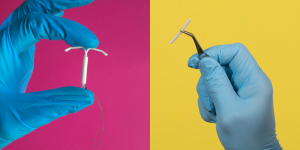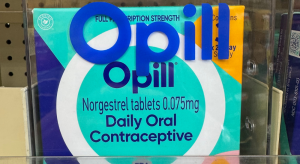
New Recommendations to Make IUD Insertion Less Painful
There is new guidance on pain management for IUD insertion and acknowledgement that providers often underestimate the pain patients feel during their procedures.

Most infants born in the U.S. are given an antibiotic eye ointment soon after delivery. This prevents a potentially serious eye infection that can be caused by chlamydia, gonorrhea, or other bacteria transmitted from parent-to-infant during birth.
Unfortunately, there is currently a shortage of erythromycin 0.5% ophthalmic ointment, which is the only regimen recommended for this use. With no end of the shortage in sight, the Centers for Disease Control and Prevention (CDC) recently released recommendations for health care providers and hospitals that are unable to get this medication.
These alternatives include another ointment that could be used and treating infants who may have been exposed to chlamydia and gonorrhea during birth, but the agency stresses the importance of pre-natal STI testing for pregnant people. This is the best way to protect both them and their infants from potential long-term consequences.
Infants exposed to bacteria like chlamydia and gonorrhea during birth can get ophthalmia neonatorum or neonatal conjunctivitis. This can cause red, swollen, and goopy eyes. If not treated, it can lead to inflammation of the iris (the colored part of the eyes), a scar or hole in the cornea, or blindness.
Treating all infants as a precaution is important. Without it, an infant born to a mother who has gonorrhea, for example, has a 30% to 50% chance of getting infected.
The shortage of erythromycin eye ointment has been going on since 2022, because multiple pharmaceutical companies have stopped making it or decreased their production. To help alleviate the shortage, the FDA has temporarily approved a similar formula manufactured by a Canadian company for sale in the United States.
The CDC says that any provider who has access to erythromycin ophthalmic ointment (0.5%) should continue to use it. It then offers three alternative prevention options for those who can’t find it.
With options two and three, babies would be treated with an injection of antibiotics (either ceftriaxone or cefotaxime).
It’s important that providers understand these alternatives, but the CDC stresses that the best way to prevent chlamydia and gonorrhea infections in newborns is to screen all pregnant people for these STIs early in the pregnancy and again in later months. Anyone who tests positive can be treated before they give birth to avoid the risk of parent-to-child transmission.

There is new guidance on pain management for IUD insertion and acknowledgement that providers often underestimate the pain patients feel during their procedures.

Our reproductive health is an important part of our sexual health and our overall health. It includes our reproductive organs and our ability to get pregnant or get someone pregnant when we choose.

Anyone who is having penis-in-vagina sex runs the risk of getting pregnant every time they have sex. Even if it’s your first time. Even if you have your period. Even if it’s a full moon and Mercury is in retrograde.

LARC methods are safe, reliable, and prevent pregnancy for years. For many people they are a great choice, but everyone has personal preferences for what fits in to their lifestyle and health profile.

Infertility can stem from factors affecting both men and women. Sometimes, these are related to sexually transmitted infections.

The Biden Administration proposed new rules designed to make getting contraception easier and less expensive.
ASHA believes that all people have the right to the information and services that will help them to have optimum sexual health. We envision a time when stigma is no longer associated with sexual health and our nation is united in its belief that sexuality is a normal, healthy, and positive aspect of human life.
ABOUT
GET INVOLVED
ASHA WEBSITES
GET HELP
© 2025 American Sexual Health Association